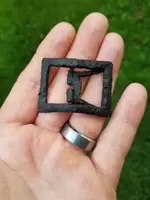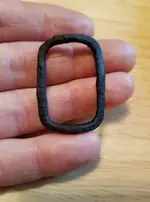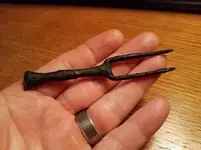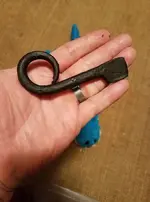After electrolysis, make sure there are no salts in it by letting it sit in water about a month, changing the water our repeatedly and testing the old water with an aquarium hydrometer.
After that let it set out and dry several weeks. Then I coat with satin polyurethane. I have relics I have done that with 30 years ago and they are fine to this day.
If you do the electrolysis properly, there is no remaining salt in the iron and you just have to wash out the additions you used for the electrolysis.
You can try some baths of distilled water and use as examlpe an pump to move the water, which makes the process faster.
To put it for a month in water will harm the object again. I guess you get also chlorine etc. as additions to your water. Also if the electrolysis wouldn´t be able to remove the salt, a bath in normal water will not fix the problem within 100 years.
To put a piece in distilled water for such a long time will kill the rest of the remaining oxide and you will get an iron "skeleton".
If you let it dry for WEEKS just on the air, the oxygen and humidity will do his work properly!

+ you get very ugly rusty looking surface.
Iron gets dried in an oven for a few hours at 100 to 150 degrees Celsius and preserved after it as soon as possible and after you have removed the thin red layer with a brush (if it come sup), better is air abrasion with round glass beads only and no sharp edged abrasion materials which harm the surface.
Do you think polyurethane is the best solution to preserve an object? And what is about the artificial looking much too shiny surface?
You will not find one professional restorer in the world who use it for preservation.
There are also some who don´t like wax but only because it is not "easy" to remove with acetone. Wax can simply cooked out in distilled water (on iron only!). But this is not necessary if you did a good job. A thin hard-wax layer protects iron real from humidity and oxygen. Any chemical preservation's can and do very often cause reactions.








 + you get very ugly rusty looking surface.
+ you get very ugly rusty looking surface.